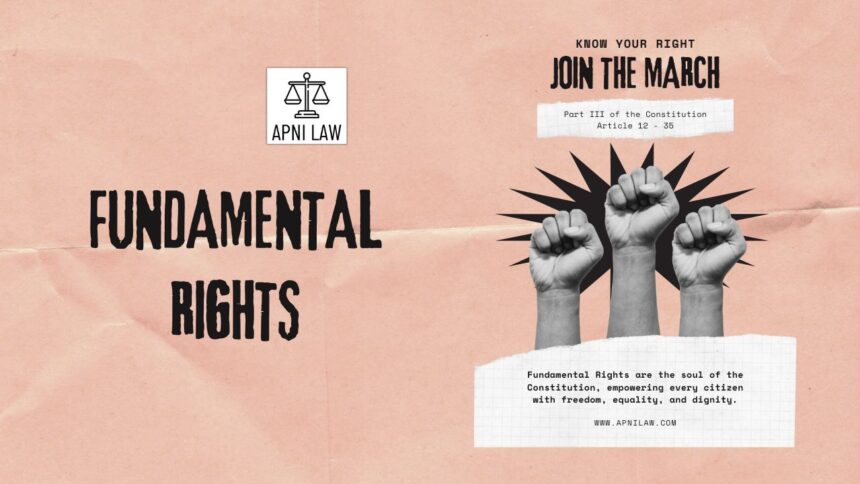Introduction
India’s democracy rests on the foundation of diversity. With hundreds of languages, multiple religions, and unique cultural traditions, India thrives on pluralism. Yet, protecting this diversity requires more than good intentions, it demands constitutional guarantees. One of the strongest safeguards lies in Article 30 of the Indian Constitution, which gives minorities the right to establish and administer educational institutions of their choice.
The framers of the Constitution recognized that education is not only about acquiring knowledge but also about preserving identity. By granting minorities this right, they ensured that India’s mosaic of cultures could flourish within the framework of unity. Today, Article 30 stands as one of the most debated yet significant provisions under Fundamental Rights. It shapes not only education but also how India balances equality with protection for its minorities.
Understanding Article 30: Meaning and Scope
Article 30 of the Constitution explicitly states that “all minorities, whether based on religion or language, shall have the right to establish and administer educational institutions of their choice.” This means both religious minorities such as Christians, Muslims, Sikhs, and linguistic minorities like Tamils, Telugus, or Bengalis in non-native states enjoy this protection.
The scope of Article 30 goes beyond setting up institutions. It extends to managing administration, appointments, admissions, and curriculum in a manner that aligns with the cultural and educational interests of the minority. The Article safeguards institutions from excessive State interference but also ensures they adhere to general laws related to health, discipline, and academic standards.
Through this dual approach, the Constitution strikes a balance: minorities retain their identity while students receive quality education.
Relevance and Importance of Article 30
The importance of Article 30 cannot be overstated in a country like India. Education plays a key role in shaping identity, culture, and participation in public life. Without this constitutional protection, minority groups would have faced the risk of cultural assimilation and loss of language or traditions.
Article 30 ensures that minorities can pass on their values and heritage to future generations. For instance, linguistic minorities can preserve their mother tongue through schools and colleges, while religious minorities can nurture cultural practices alongside modern education.
Institutions like St. Stephen’s College in Delhi, Aligarh Muslim University, Jamia Millia Islamia, and Khalsa institutions serve as prime examples of how Article 30 has empowered communities to build world-class centers of learning while retaining their cultural essence.
Judicial Interpretation of Article 30
The judiciary has played an important role in interpreting the scope of Article 30.
In St. Xavier’s College v. State of Gujarat (1974), the Supreme Court ruled that minority institutions have the right to administer themselves without undue State interference. However, the Court clarified that regulatory measures for academic excellence and discipline are permissible.
The landmark T.M.A. Pai Foundation v. State of Karnataka (2002) case further elaborated on the rights under Article 30. The Court held that minorities enjoy full authority to establish and run institutions but cannot escape regulations meant to maintain fairness, transparency, and educational standards.
In Inamdar v. State of Maharashtra (2005), the Court observed that while minority institutions have autonomy, they must follow principles of equality in admissions, especially when receiving State aid.
These cases show how Article 30 has been a dynamic provision, balancing minority autonomy with broader constitutional goals of equality and justice.
Practical Impact of Article 30
The impact of Article 30 is visible across India’s education system. Minority-run schools and colleges have educated not only their community but also students from other backgrounds. This has promoted national integration, tolerance, and cultural exchange.
Christian institutions such as Loyola College and Xavier’s schools are renowned for their academic excellence. Muslim institutions like Aligarh Muslim University and Jamia Millia Islamia have advanced higher education for their community while contributing to national progress. Sikh institutions like Khalsa College have preserved Sikh culture and values. Even smaller communities like Parsis run respected educational institutions under this right.
Thus, Article 30 has fostered inclusivity while ensuring diversity thrives.
Criticism and Challenges
Despite its importance, Article 30 has also attracted criticism. Some argue that it grants minorities more privileges than the majority community, creating an imbalance in the constitutional framework. Others believe that the right is sometimes misused, leading to disputes over admission policies or minority status.
For example, questions have arisen over whether institutions primarily catering to non-minority students can still claim minority rights. Similarly, the balance between autonomy and accountability continues to spark debate, particularly in aided institutions.
Critics also claim that majority communities lack similar rights, which challenges the idea of equal treatment. However, defenders argue that minorities require these special protections to preserve their culture in a society dominated by larger groups.
FAQs on Article 30
Why was Article 30 included in the Constitution?
It was included to protect the cultural and educational identity of religious and linguistic minorities in India, ensuring they could establish and manage their own institutions.
Can the government regulate minority institutions?
Yes, the government can regulate them for maintaining standards, transparency, and discipline, but it cannot interfere in a way that alters their minority character.
Do minority institutions admit only minority students?
No, they admit students from all communities. However, they can give preference to their community to preserve cultural and educational objectives.
Conclusion
Article 30 of the Indian Constitution reflects India’s commitment to diversity and equality. By granting minorities the right to establish and administer educational institutions, it provides a constitutional safeguard for preserving culture and identity. At the same time, judicial interpretation ensures that these rights operate within the framework of fairness, transparency, and academic excellence.
While debates over equality and autonomy will continue, Article 30 remains a cornerstone of India’s secular democracy. It ensures that minority voices are not silenced but celebrated as part of the national fabric. In a country as diverse as India, such protections are not privileges but necessities, making Article 30 one of the most vital guarantees of the Constitution.
For any specific query call at +91 – 8569843472







